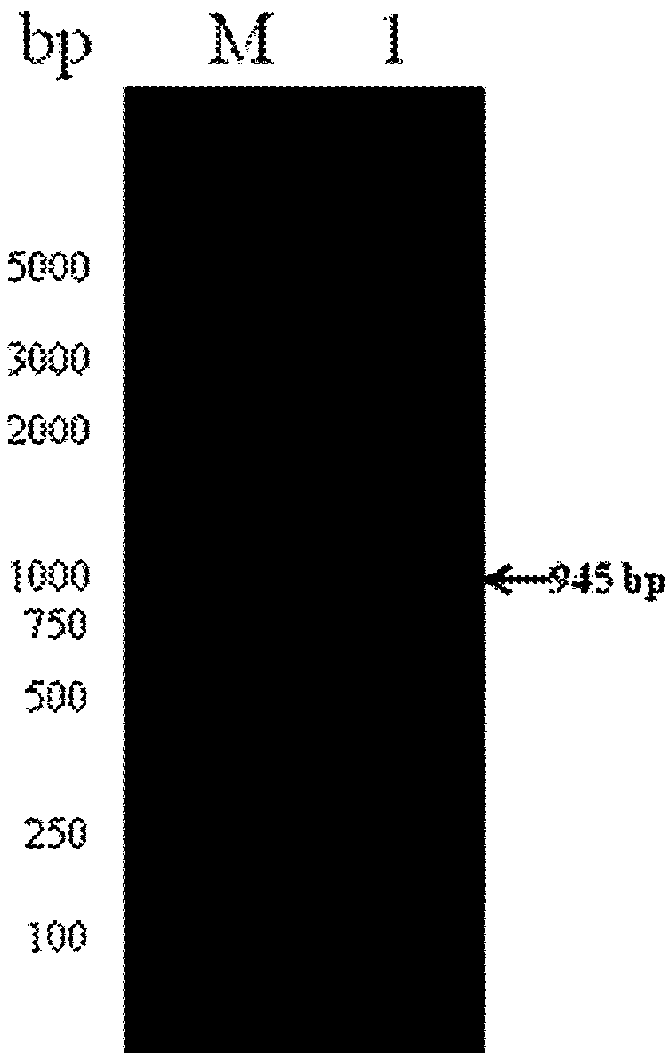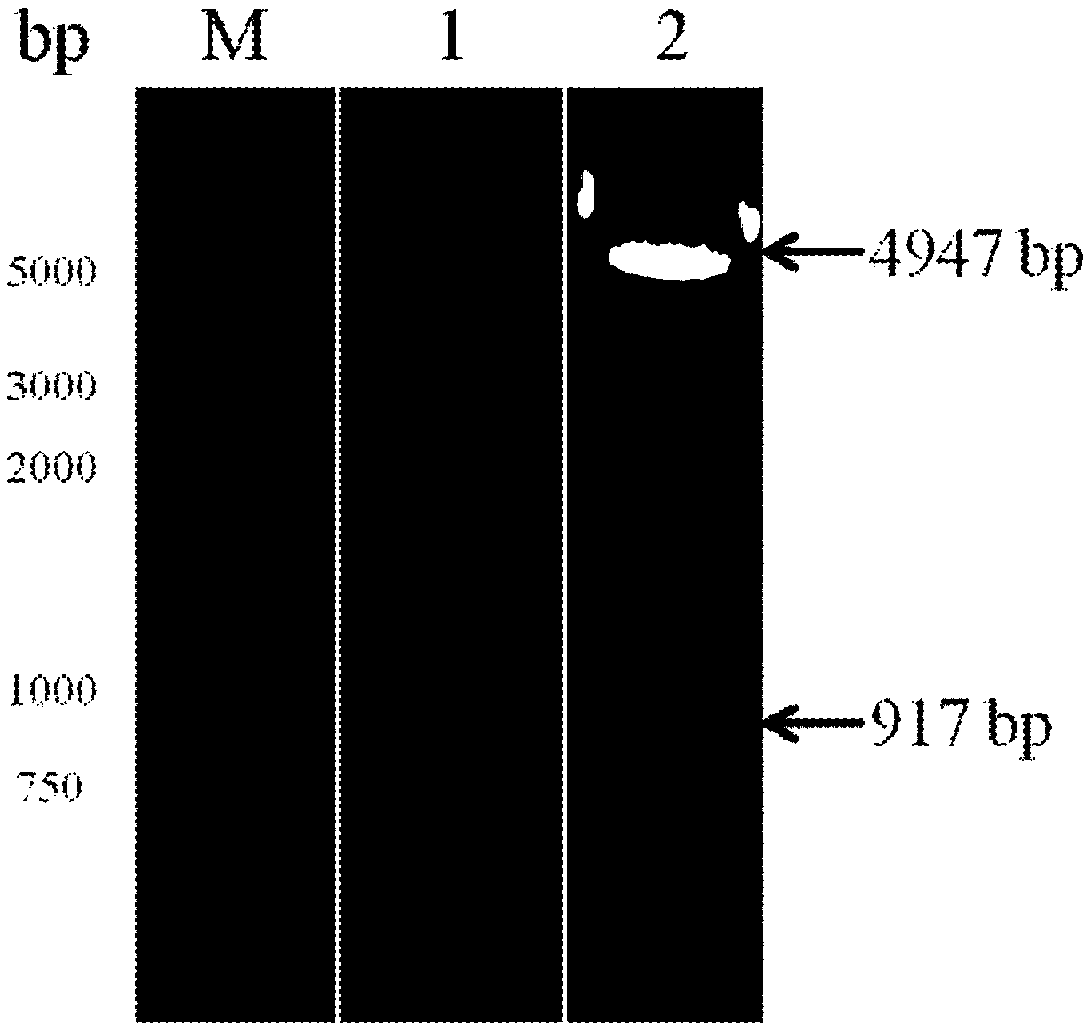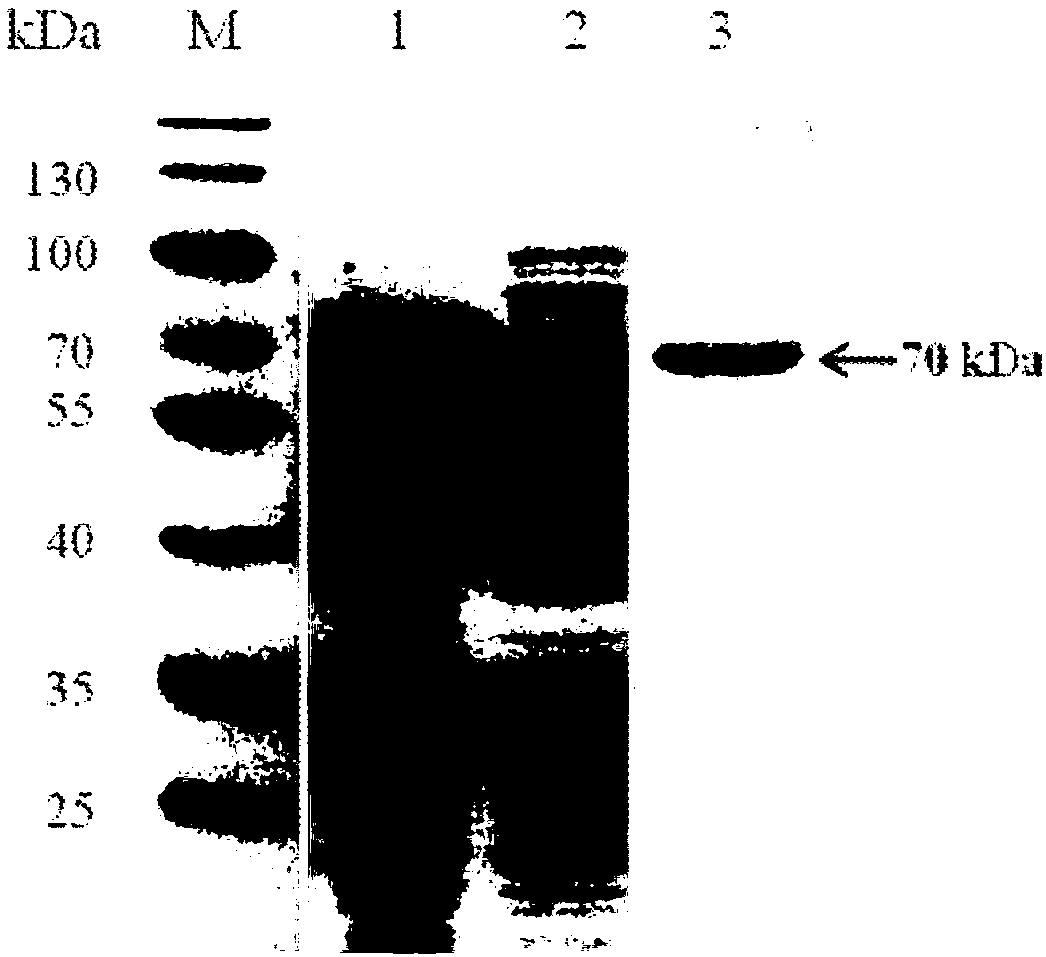Globoid protein gene 4 of babesia orientalis and protein for encoding globoid protein gene 4
A technology for Babesia and Babesiosis, applied in the field of molecular biology, can solve the problems of complicated operation, easy misjudgment, difficult clinical detection, etc., and achieve the effect of good immunogenicity
- Summary
- Abstract
- Description
- Claims
- Application Information
AI Technical Summary
Problems solved by technology
Method used
Image
Examples
Embodiment 1
[0023] Embodiment 1: the purification of Babesia orientalis
[0024] Collect 100mL anticoagulant blood from buffalo infected with insects (infection rate is about 5-10%) in two 50mL centrifuge tubes, centrifuge at 3000rpm at low speed for 10min, remove the white flocs (leukocytes) between the supernatant and red blood cells; slowly add 3 times the volume of red blood cells in 1xPBS, shake well, repeat this operation 3 times until the supernatant is colorless and transparent; add 2 times the volume of red blood cell lysate, shake well, let stand at room temperature for 30 minutes, blow and beat the 10mL syringe repeatedly 10 times, centrifuge at 12000rpm for 10 minutes, Collect the precipitate and repeat this step 3 times until the supernatant is colorless and transparent; the precipitate is dissolved in 1xPBS, which is Babesia orientalis.
Embodiment 2
[0025] Embodiment 2: the extraction of Babesia orientalis gDNA
[0026] The extracted parasite solution was used for the extraction of gDNA, and the extraction kit was Tiangen kit. The extracted gDNA samples were frozen at -20°C for future use.
Embodiment 3
[0027] Example 3: Cloning and sequence analysis of Babesia orientalis globular protein gene 4
[0028] 1) Primer design
[0029] The upstream and downstream primers F1: 5'-ATGGTGGCCTCTTTCCCTACG-3'; R1: 5'-TTACTCAGTGGTGGTTTCGGTTTC-3' were designed using clone manager software.
[0030] 2) PCR amplification: use Babesia orientalis gDNA as a template, and perform PCR amplification with F1 and R1 primers. The reaction system is 25 μL. The PCR reaction system is as follows:
[0031]
[0032]
[0033] PCR reaction conditions: the reaction conditions are 94°C for 5min; 94°C for 30sec, 55°C for 90sec, 68°C for 1min; 72°C for 10min; 35 cycles.
[0034] 3) PCR product identification: After the amplification is completed, take 10 μL of the PCR product and apply it with 10×nucleic acid loading buffer, 1.0% agarose gel, 1×TAE buffer, 120V, electrophoresis for 30 minutes to observe the results, and obtain the target fragment (See figure 1 ).
[0035] 4) Cloning, screening and sequ...
PUM
| Property | Measurement | Unit |
|---|---|---|
| molecular weight | aaaaa | aaaaa |
Abstract
Description
Claims
Application Information
 Login to View More
Login to View More - R&D
- Intellectual Property
- Life Sciences
- Materials
- Tech Scout
- Unparalleled Data Quality
- Higher Quality Content
- 60% Fewer Hallucinations
Browse by: Latest US Patents, China's latest patents, Technical Efficacy Thesaurus, Application Domain, Technology Topic, Popular Technical Reports.
© 2025 PatSnap. All rights reserved.Legal|Privacy policy|Modern Slavery Act Transparency Statement|Sitemap|About US| Contact US: help@patsnap.com



